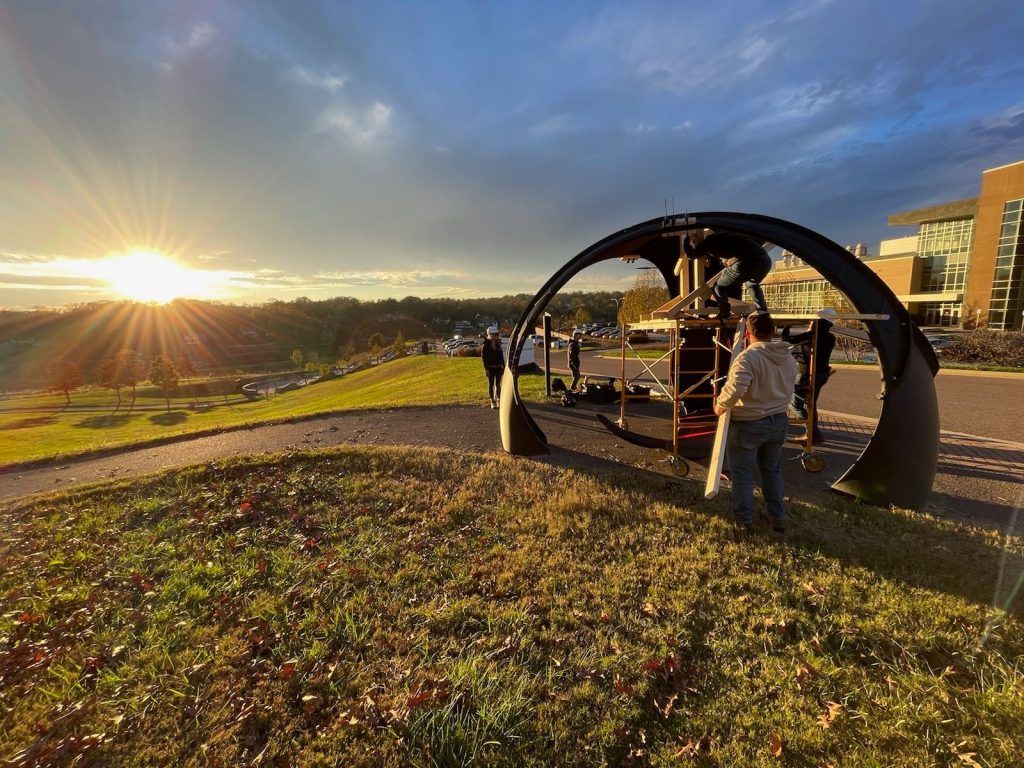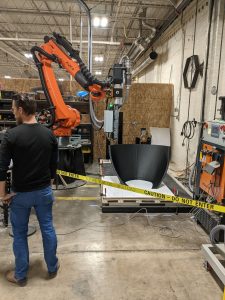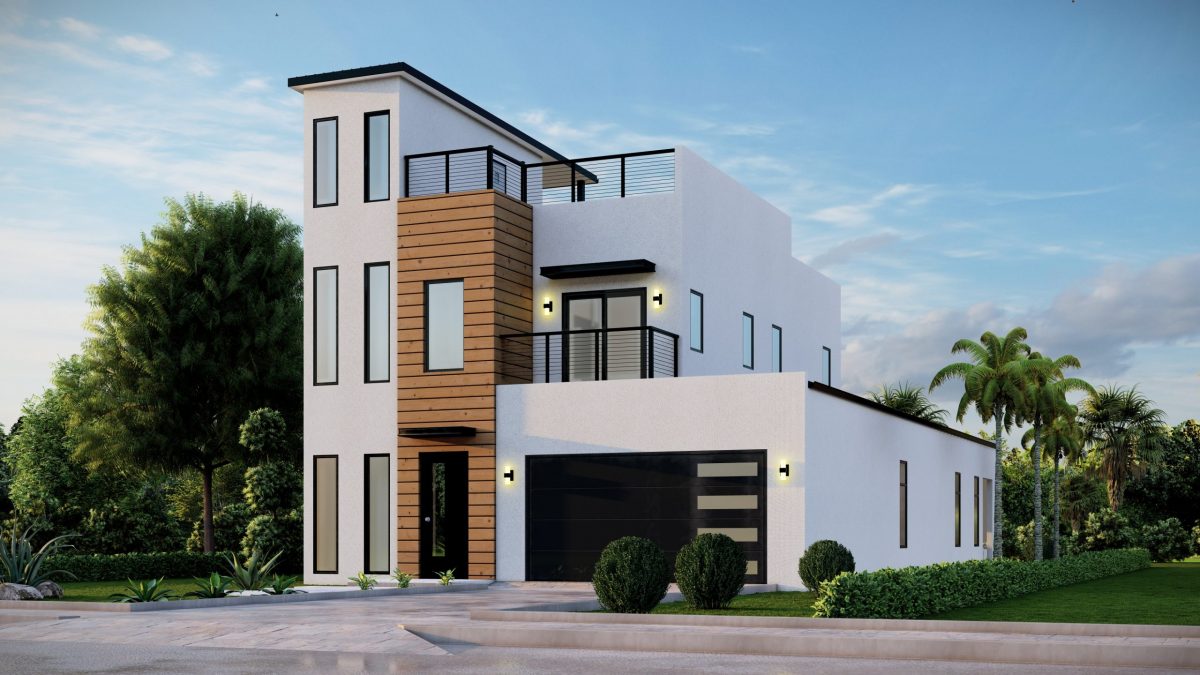

3D-Printed Pavilion Draws Attention
The distinctive arches of Trillium Pavilion at University of Tennessee’s Research Park at Cherokee Farm are a testament to the allure of 3D-printed composites. Designed, printed and installed by University of Tennessee (UT) architectural students in partnership with Loci Robotics of Knoxville, the 15-foot diameter, 1,400-pound structure was 3D-printed from three composite materials in just a few days.
The pavilion is the latest student-industry collaboration between UT’s Institute for Smart Structures and Loci Robotics. Previous projects included a reception desk and a visual/acoustic screen between an open office and a conference area. When James Rose, director of the Institute for Smart Structures, heard that Cherokee Farm was searching for an eye-catching structure to help draw visitors to its campus, he knew it was time for another collaboration – this time on a larger scale.
Fourteen students worked on the project during a fall 2022 design/build seminar that was funded by Cherokee Farm, the East Tennessee Chapter of the American Institute of Architects and the university’s Office of Research, Innovation and Economic Development. Small groups first researched and presented designs based on nature.
“Organic objects like shells, flowers and insect wings and the like are produced by processes of accretion and deposition that are similar to 3D printing,” says Rose. “Nature, after all, is the original additive manufacturer.” The final design was inspired by the arching, symmetrical petals of trillium woodland wildflowers.
Next, students collaborated with Rose and Maximilian Heres, CEO and Jeff Foote, CTO, founders of Loci Robotics, to translate the concept into a CAD file. Loci Robotics printed the structure’s 13 components using a LOCI-One robotic 3D printing system to lay down single bead, 15-millimeter-wide, 5-millimeter-tall layers of material.
The pavilion shell comprises three bases, three seats, six dome parts printed in pairs and an oculus. The bases and dome shell are made from recycled carbon fiber reinforced ABS. The shell is capped by a gray, triangular, GFRP oculus. The benches that are attached to each base were printed from wood-filled, polylactic acid (PLA) to create a wood-like, smooth texture for sitting on. All of the components except the benches were left unfinished to display the tell-tale beveled edges of 3D printing.
“We wanted to draw attention to the process,” Rose explains. “People are drawn to the unusual surface.”
The parts were designed to be lightweight – the largest, the bases, weigh 150 pounds each – so that students could install the pavilion by hand. Students assembled the structure in just 48 hours after receiving completed parts from Loci Robotics. However, fastening the parts was challenging. During bolting, the large, flat flanges slid off each other. While the students fixed the problem by holding the flanges in place with an impromptu web of straps, Rose will instruct students to include grooves in future applications for self-aligning, interlocking parts.
Rose and Heres were impressed with how quickly students learned to design for 3D printing.
“Additive manufacturing is unlike any previous method of construction,” says Rose. “The natively digital material requires a whole new way of thinking.” This includes understanding the process constraints and assembly methods.
For example, 3D-printed material is soft when extruded and unable to span long, unsupported horizontal projections. Large parts must also be designed as smaller components that are later assembled to accommodate the print system’s capabilities and rules of large-format, 3D printing. Loci Robotics’ equipment can print parts exceeding 10 feet long, five feet wide and six feet tall.
One of the biggest benefits of 3D-printed thermoplastics is their sustainability. Material for the Trillium structure’s carbon fiber shell was recycled from parts of an Olli 3D-printed autonomous shuttle built by Local Motors, which closed operations in 2022.
“At the end of their life cycle, thermoplastic parts can be ground up, re-pelletized and re-used to print something else,” says Heres. “This use of otherwise wasted materials is our contribution to keep plastic out of landfills, oceans and nature where it doesn’t belong.”
That’s a big draw, but only if the materials function as required. Rose says the Trillium project proves they can. “Our project demonstrates that ABS – carbon fiber reinforced in this case – can be reused multiple times for structural applications with minimal degradation,” he says.
The Trillium Pavilion also features bio-derived thermoplastics in its bases. The wood-reinforced PLA, which is made from wood flour and corn starch derived PLA, is fully biodegradable and renewable. It also reduces waste by turning wood industry byproducts like sawdust into usable products. Using it in an outdoor, covered environment inside the Trillium Pavilion will provide an important test of its durability.
Both Rose and Heres envision continued growth in 3D-printed thermoplastic architectural applications. Loci Robotics is experiencing a surge of interest in structural parts, such as 3D-printed tiny homes and interior and exterior design applications.
“The killer application for 3D printing may be its capacity for creating complex geometries, non-repetitive parts and double-curved surfaces – forms that prove too difficult and expensive for other methods,” says Rose.
Melissa O’Leary is a freelance writer in Cleveland. Email comments to melissa@good4you.org.

A KUKA robot 3D prints one of the bases for the Trillium Pavilion.

SUBSCRIBE TO CM MAGAZINE
Composites Manufacturing Magazine is the official publication of the American Composites Manufacturers Association. Subscribe to get a free annual subscription to Composites Manufacturing Magazine and receive composites industry insights you can’t get anywhere else.




